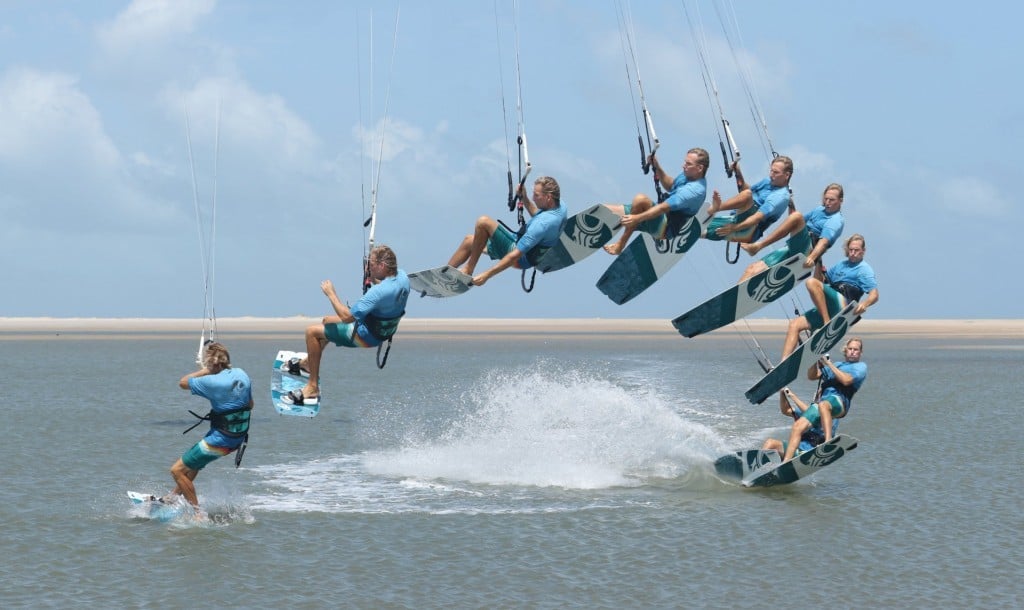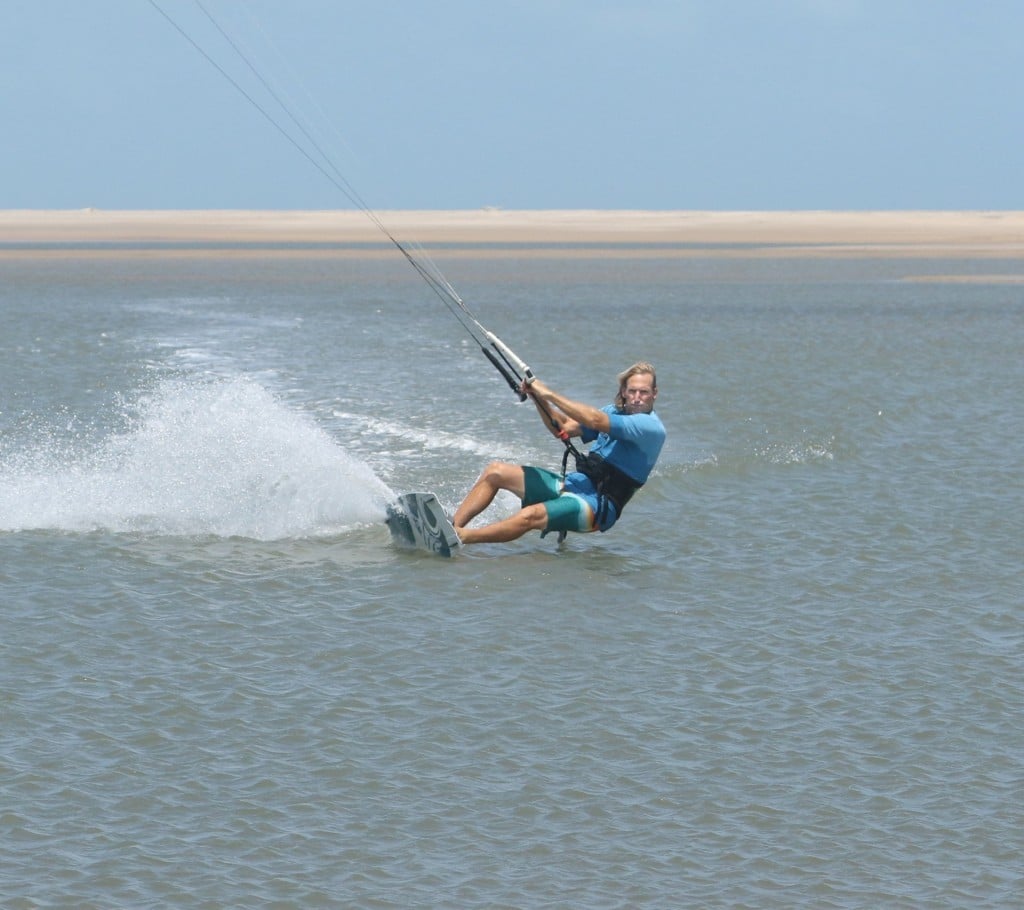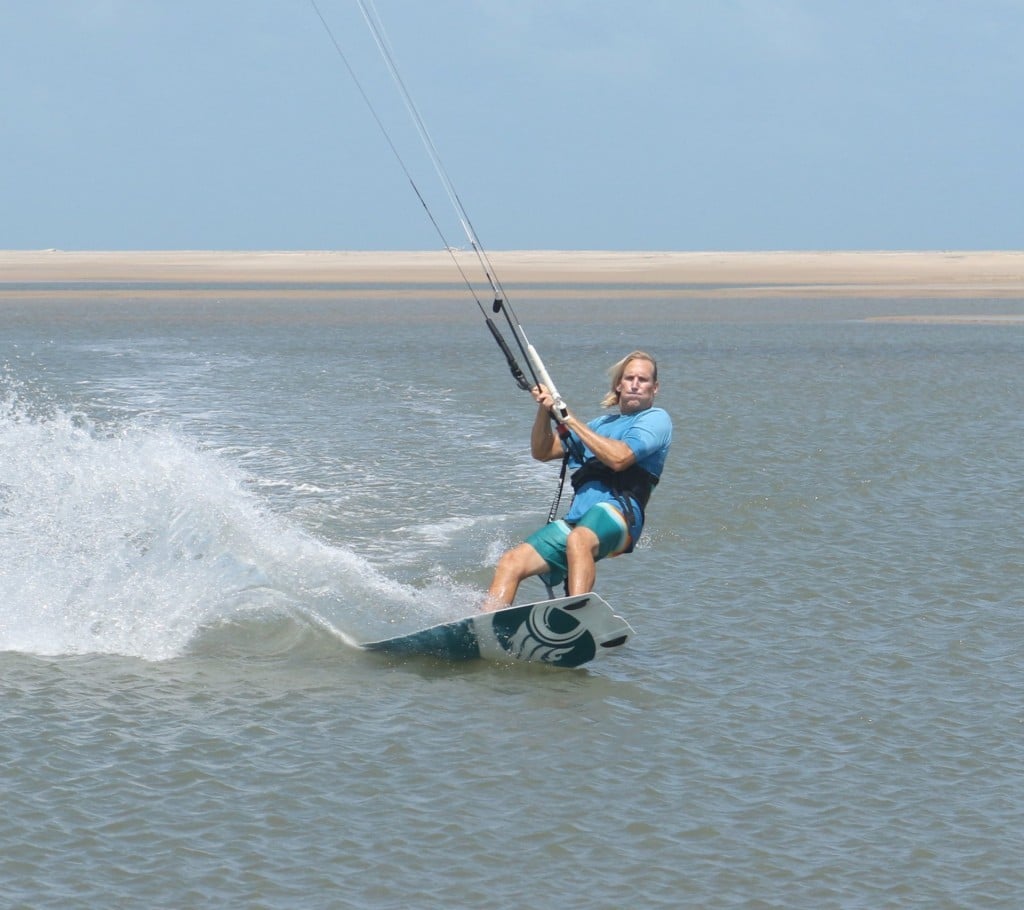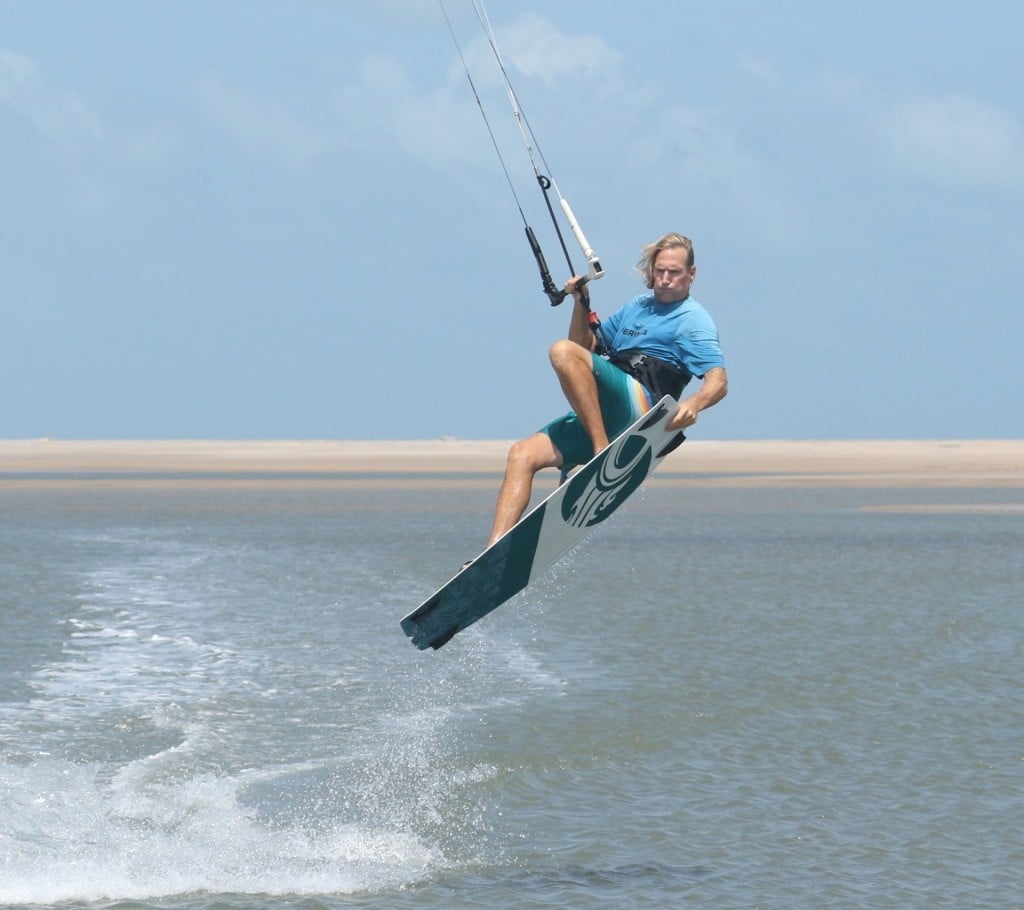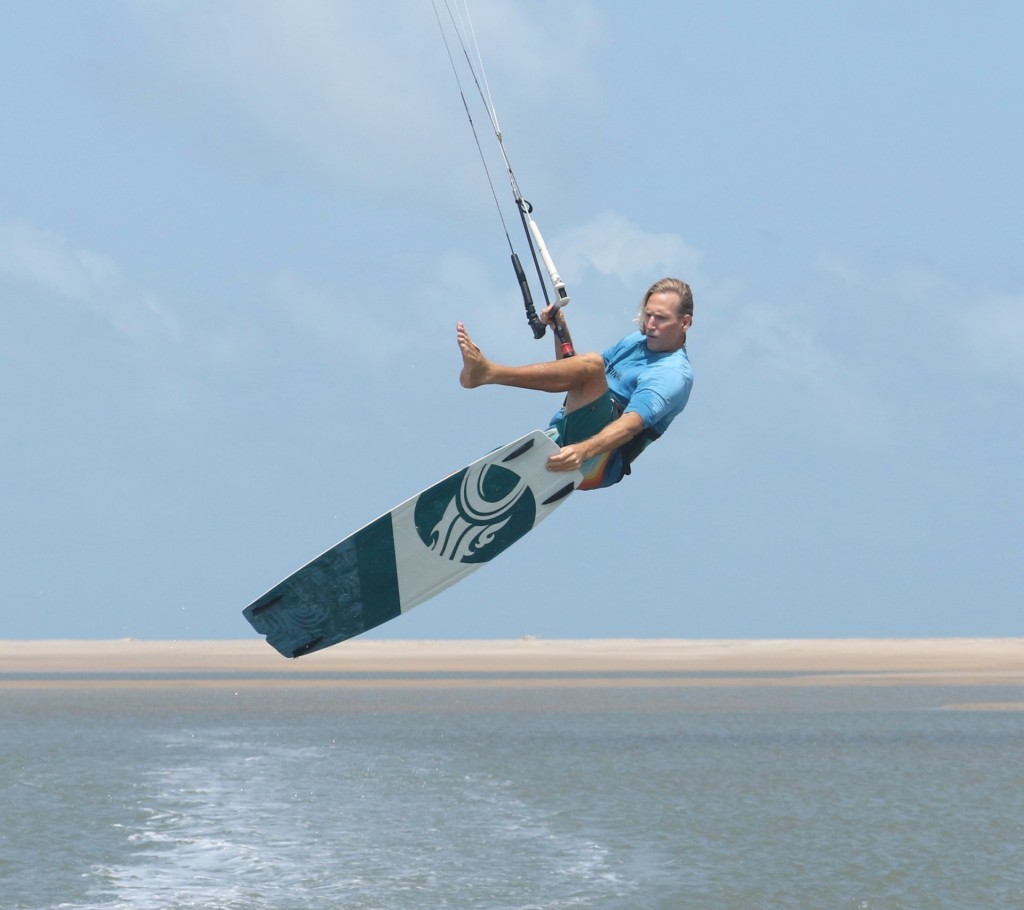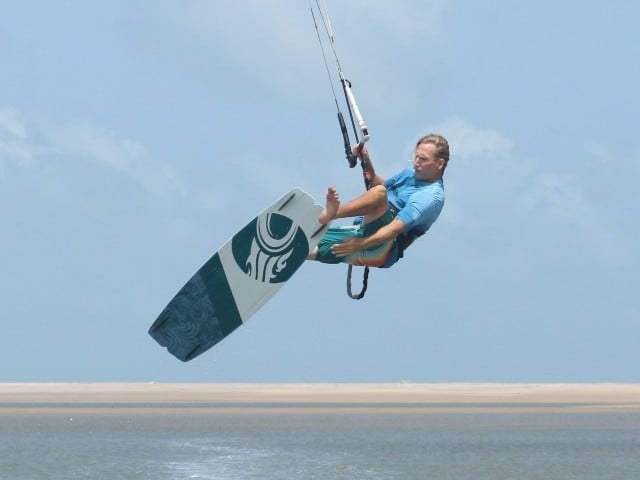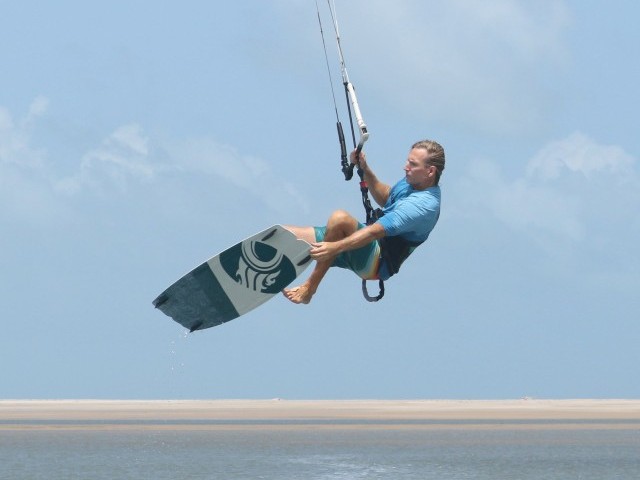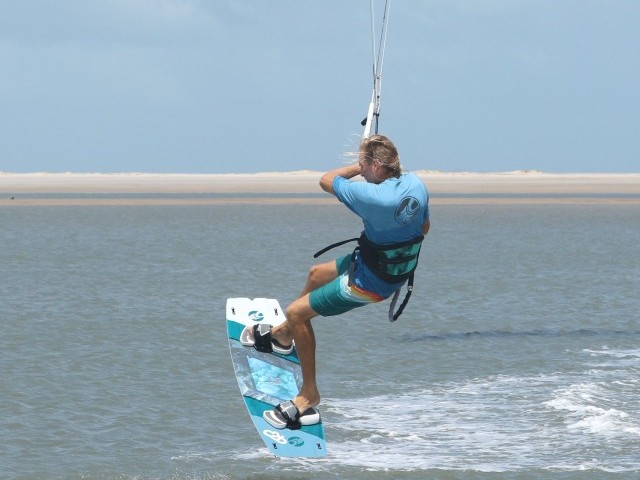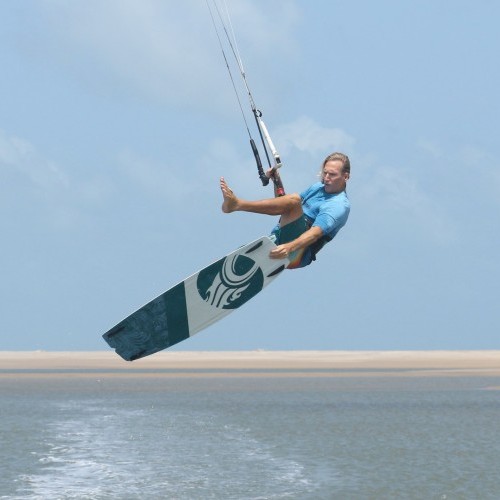
Leg Over One Foot Jump Transition
Technique / Intermediate
Introduction
Nothing beats the pleasure of combining two moves, whisking them together and cooking up something tasty! This one's an absolute belter; one measure jump transition, one measure leg over one foot, and boom! You've got yet another cracking way to change direction.
We'd recommend first practising the leg over one foot in a jump, as you'll have more time and control to learn the mechanics (see Issue 95). Once you've got it down, it'll work equally well as this transition.
As per any form of jump transition, the positioning of your kite is vital. Get it right, and you'll have time and float to add the embellishment of your choice! Let's have a look at how you'll get this one nailed…
Approach & Send Pic A.
To give yourself time and float, you'll want to approach with a bit more speed than you might for a standard air gybe. This way, you can aim for a bit more height and a touch more travel. Add these two together, and you'll get a touch more time and have some momentum to stick your landing, even if your kite ends up not exactly where you want it. It's also a good idea to wiggle your front foot a little loose in the strap so that it'll slide out more easily. Approach on a good edge with some speed, kite at 11 or 1 o'clock. Keep your bar on the sweet spot and avoid pulling in too much power. The effort should be in your legs, not your arms. You want to get the kite moving quickly to get max lift for your buck, but you don't want it travelling back past 12, so it'll be a short sharp send, positive and quick. Here you can see that Christian is coming in on a decent edge. He's looking forwards; he started with his kite at 11 and has given the bar a positive input to send the kite quickly up to 12. As the kite rises, he feathers the bar to follow the sweet spot and keeps his bum low and the board away from him on stiff legs.
Forward, Stamp & Pull Pic B.
Your take off needs to be dynamic (kite face optional) and in order. First off, you need to stop the kite from moving back. In fact, you actually want to move it ever so slightly forward! By doing this, you'll give yourself a bit of travel and position the kite forward, which will give you some room for error when you're fiddling about with your board. This forward send should be done on the sweet spot and should not be confused with pulling in on the bar. The second job is an aggressive stamp against your back foot, extending your back leg to launch yourself into the air. By kicking against your edge, you'll get more up and max bang for your buck. Once you've stomped, you can finally pull the bar in to help you go up. Looking at Christian, you can see that he's already steered the kite slightly forward; he's explosively extended his back leg and is now pulling on the bar to get all the beans.
Level Grab & Bone Pic C.
As soon as you lift off, think of levelling your bar. Moving your kite forward a tad is all good and well, but you don't want it pulling you off balance or drifting on, so stop it. The quicker you can get your grab, the sooner you can start your leg over and the more chance you have of completing it. Lift your front leg towards you and keep your back leg extended, as this will give you more room for what's to come. As soon as the board is within reach, grab the nose. You can see that Christian has his bar level and has grabbed the nose of his board whilst keeping his back leg straight. It's also worth noting that he's looking at his front foot, which he'll be taking out, all performed whilst he's on the way up.
Out & Up Pic D.
Your aim for the Leg Over is to slide your front foot out of the strap, move your leg up and over the board, and then position it over your arm and the nose so that you can pass your board. To achieve this, you'll need to pull your foot out of the strap and pass it between the board and your other leg first. This is where having your back leg boned out is key; you have space to pass your foot and leg between the board by moving your foot towards your other one. This way, you don't need to be particularly flexible. Once your foot is out of the strap, extend your leg towards your other foot, and hey presto, you can get it above the board.
Once there, lift your leg and move it over your hand whilst pushing your hand under your knee. Here Christian already has his foot through and is lifting his leg up and forwards whilst pushing the board under his knee. You can see he's looking at the board, eyes on the target.
Over & Flick Pic E.
The tricky bit. As we said, this is best practised in a jump first, and a few goes sitting on terra firma won't hurt either! Push the board as far under your leg as possible, as it's simpler than trying to contort your leg further forward. As soon as your hand and the nose have passed under your knee, let go of your grab and give the board a little flick up with your fingers. You can see how far under his front leg Christian has pushed the board before flicking it up. He's still got his eyes on the prize, fully focused on the nose of the board where he'll grab it.
Catch & In Pic F.
If you can catch the board, you're nearly there. The trick is all in your arm speed. As soon as you've flicked the board up, it's a race to lift your arm over your leg as it drops and grab the board. The further you push the board under your knee, the shorter the distance. Time is not on your side, so as soon as you've got the board, get your foot back in the strap. Out, over and in will all have passed in a flash. Whilst your attention has been taken up with your latest fancy, you still have a kite to control. Having your hand centred and looking forward will help not to pull on the bar too much, but your kite will be drifting slowly back. However, your little forward levelling will be coming in very handy now. Christian is now fully focused on his strap and getting his foot back in. It's fair to say that you will be on your way down!
Dive & Downwind Pic G.
Same old, if you can land with your board pointing off the wind, you'll stay on the surface, and if you can get a decent dive in, you'll power out. Even as you're sliding your foot back in, you can start to dive the kite. The more aggressively you dive it, the deeper in the window it'll fly and the more downwind pull you'll get. Marry this to a tail-first landing (it was your nose a second ago), and you should be able to twist the board with your hips to point it downwind. You can see that Christian has given the bar a positive input to get the kite diving whilst twisting his lower half back to point his board downwind. Remember to get your free hand back on so that you can stop the kite diving into the water!
Top Tips
Get the leg over practised beforehand so that you can do it quickly. It's all in pushing the board under your knee rather than trying to move your leg back over the nose.
You can practise the forward redirect with a normal air gybe first, just to get used to the amount you need.
Have a look at the sequence and watch the video to see how we mix all the ingredients into one!
Common Problems
The most common problem here will be the board dropping away from you when you try and pass your leg over and race with your hand. The most probable cause will be that your feet are too low, so the board is trying to go back where it belongs. If your board keeps dropping, try leaning back in your harness so that you can hold your feet and your board further up.
Another problem will be the kite drifting too far back, and as such, you'll struggle to finish the move. The redirect forward before take-off is key. Even so, if you keep the bar pulled in, your kite will drift. Feel the sweet spot, keep your bar on it and keep looking forwards.
Keystones
- Send and redirect forward
- Kick and level
- Grab and bone
- Foot out and push the board back
- Flick, catch and dive
This technique article was in Issue 99 of IKSURFMAG.
Related
By Christian and Karine
Christian and Karine have been working together as a coaching team, running improver to advanced kitesurfing clinics since 2003.





